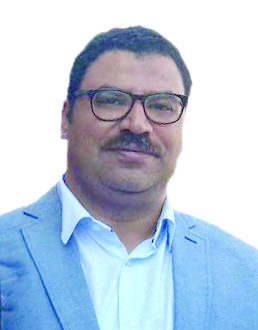World Drowning Prevention Day was last Monday. You would be forgiven for letting this pass unnoticed because it’s not as if the United Nations or anyone else did a media song-and-dance about it.
World Drowning Prevention Day was declared in April 2021 by General Assembly resolution to be commemorated annually on 25 July to highlight the fact that thousands every year drown before they arrive at a destination that might afford them a better life. Oh, the irony!
This special day should live up to its name and offer life-saving solutions.
Think of the unseaworthy craft crammed with illegal immigrants, whose dreams and ambitions are snuffed out, even within sight of land.
However, on World Drowning Prevention Day, the World Health Organisation (WHO) has revealed the horrific extent of the problem.
According to WHO, more than 236,000 people die annually from drowning, which makes it the third leading cause of accidental death worldwide. More than 90 per cent of drowning occur in low- and middle-income countries, where children under five are at greatest risk.
Surprisingly, drowning incidents due to dangerous or risky behaviour are rare. Most deaths by drowning are frequently linked to daily routines – bathing, collecting water for the home, travelling in small boats, and on ferries and fishing – while the impacts of monsoons and other seasonal or extreme weather events are also a frequent cause.
We can, therefore, understand why children, men, and individuals with increased access to water are most at risk of drowning. Drownings usually occur among the most economically active segment of the population, while some studies suggest that low- and middle-income countries account for over 90 per cent of accidental deaths by water.
According to WHO data in 2020, drowning deaths in Egypt reached 1,122, or 0.21 per cent of total deaths as it ranks 146th in the world.
Despite the bleak reality, WHO Director-General Tedros Adhanom Ghebreyesus had some good news for a change.
“Most of these deaths are preventable through evidence-based, low-cost solutions,” he said, referring to tools and guidance, developed by WHO to help governments implement solutions that can save thousands of lives.
WHO has recommended six evidence-based measures to prevent drowning, which include installing barriers controlling access to water, and training bystanders in safe rescue and resuscitation techniques.
School-aged children also should be taught basic swimming and water safety skills, while boys and girls should be provided supervised daycare.
Other measures call for setting and enforcing safe boating practices, shipping and ferry regulations, and improving flood risk management.
World Drowning Prevention Day should be an occasion to re-visit recommendations to governments to tailor and implement effective drowning prevention programmes to their settings, improve data about drowning, and develop national water safety plans.
However, the mission to combat drowning is not a monopoly of governments as groups and individuals can have a role to play too, whether by hosting public events to share water safety information or launching water safety campaigns. After all, a drowning man will clutch to a straw.






Discussion about this post